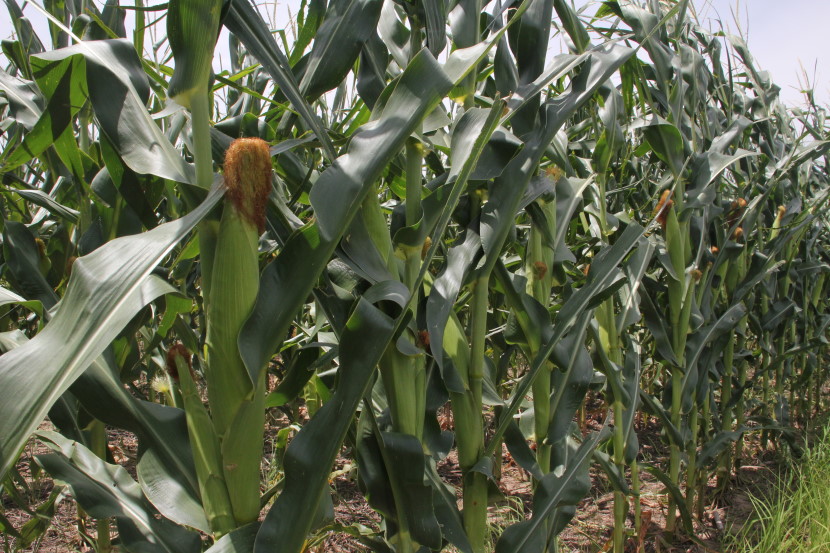
Agricultural News
FAPRI Analyzes Shallow Loss Program in Senate Farm Bill Proposal
Thu, 31 May 2012 08:23:06 CDT
 With Senate consideration of a new Farm Bill expected to start within the next week or so, the Food and Agricultural Policy Research Institute at the University of Missouri (FAPRI-MU) has release this week a new analysis of the potential impacts of key farm program changes.
With Senate consideration of a new Farm Bill expected to start within the next week or so, the Food and Agricultural Policy Research Institute at the University of Missouri (FAPRI-MU) has release this week a new analysis of the potential impacts of key farm program changes.
The analysis compares a current farm policy baseline to three alternative scenarios, with multi-year averages across 500 stochastic outcomes and demonstrates how different commodities might be impacted.
Scenario 1 would eliminate the DCP and ACRE programs effective with the 2013 crop year, but retain all of the other assumptions of the Baseline.
Scenario 2 would introduce the new ARC and STAX programs in 2013, as well as eliminate the DCP and ACRE programs. Scenario 2 would also include a small revision to the cotton marketing loan that would allow the loan rate to decline under certain conditions.
Scenario 3 would make all the same assumptions as Scenario 2 and would also introduce the new lower cap on CRP enrollment.
Under scenario #1, FAPRI found that eliminating the Direct and Counter-cyclical (DCP) and Average Crop Revenue Election (ACRE) payments has a larger proportional impact on producers of some crops than on others.
"At one extreme, soybean producers would lose $11 per base acre in DCP payments and $3 per planted acre in ACRE payments. At the other extreme, rice producers would lose $96 per base acre in DCP payments. In absolute terms, corn producers would lose more payments per acre than wheat producers, but because the market value of corn production per acre is much greater than for wheat, the proportional effect on wheat producer income of losing DCP and ACRE payments would be greater than for corn," according to the report.
In Scenario 1, eliminating the DCP and ACRE programs results in a slight increase in market prices. The resulting increase in the value of market sales offsets a small portion of the loss in government payments. For every crop, however, the sum of market receipts and government payments falls considerably relative to the Baseline.
In Scenario 2, introducing the ARC and STAX programs replaces more of the income lost because of the elimination of the DCP and ACRE programs. Across 500 stochastic outcomes and five marketing years, average estimated ARC payments are about $20 per acre for corn, $10 per acre for soybeans, $7 per acre for wheat, $16 per acre for rice and $14 per acre for peanuts. STAX net indemnities (total indemnities paid for losses minus producer?paid premiums) average $41 per acre.
"Many STAX and ARC outcomes result in no payments to producers. However, when there is a large enough decline in revenues relative to a benchmark, payments can be quite large," the report notes. The reported averages reflect the distribution of possible benefits, including both the outcomes where no payments occur and where the payments are at their maximum value (10 percent of benchmark revenues on eligible acres for ARC and 20 percent for STAX).
The slight increase in production caused by introducing ARC and STAX payments results in more production and lower prices than in the scenario that simply eliminates DCP and ACRE payments. For crops other than wheat, rice and peanuts, the market value of production per acre also declines relative to the Baseline.
The combination of lost DCP and ACRE payments and lower prices more than offsets the new ARC and STAX benefits for producers that have one base acre today for each acre they plant. On average, this result holds for all crops, although the reductions in total revenues are much greater for some crops than others.
The FAPRI report emphasizes that "base acreage and planted acreage can be very different, and this has important implications for the net effect of the program changes for returns on particular farms."
"Producers with a lot of base acreage relative to planted acreage will be the most affected by the loss of DCP payments. Producers with a lot more planted acreage than base acreage are more likely to benefit from the shift to ARC and STAX. U.S. planted acreage far exceeds base acreage for soybeans, while the reverse is true for wheat, upland cotton, sorghum, barley and rice," according to the report.
At the same time, FAPRI notes that there are other changes included in the farm bill that are beyond the scope of this report and would also affect producer returns and payments.
For example, the Supplemental Coverage Option (SCO) "may prove an attractive option for many producers, including those who might be affected by ARC payment limitations. Producers would also benefit from other changes in crop insurance, such as making enterprise coverage available separately for irrigated and non? irrigated acres, introducing revenue insurance for peanuts, and increasing the floor "plug" yield used in determining actual production history (APH) yields."
Click here for the full 23 page report from FAPRI.
WebReadyTM Powered by WireReady® NSI
Top Agricultural News
More Headlines...




















